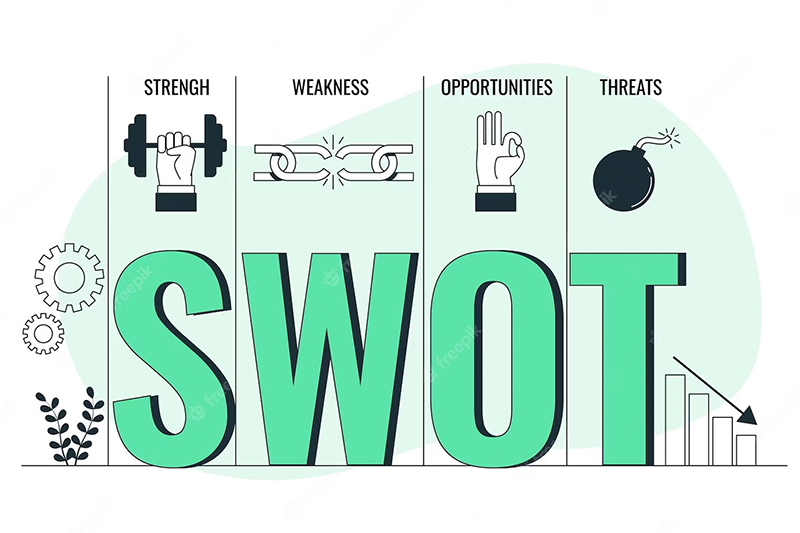The Importance of a Business Plan – Part 1 Sep 1, 2023
“Going into business without a business plan is like going on a mountain trek without a map or GPS support – you’ll eventually get lost and starve!” – Kevin J. Donaldson
You’re ready to start a business in Manitoba in 2023. Amazing! We couldn’t be more excited for you. The beginning stages of a business can be very exciting; however, they can also be very overwhelming.
The road ahead has a lot of uncertainty – which is why you need to write a business plan.
It’s a critical step that many new business owners fail to do, and a major reason why many of these businesses will fail in the long run.
In this article, you’re going to get a full explanation of how to write a business plan. You’ll feel confident in knowing how to navigate your business moving forward.
You’re going to learn:
– What a business plan is and why it’s important
– The key components that make a great business plan
– Common mistakes and how to avoid them
– Best practices when writing your business plan
– And additional resources to support you on your business planning journey
Let’s dive in!
A good business plan is going to help you in three key areas:
1. Prove viability
2. Secure funding
3. Create a strategy
Prove viability
You want to ensure that you’re pursuing the right endeavors, optimizing your operations and procedures, and mitigating as much risk as possible. When making a sound business plan, you’re forced to research and ask yourself lots of hard questions to gain a deeper understanding of your business operations.
A solid business plan helps to address some of the most common reasons a business fails. In fact, the U.S Bureau of Labor Statistics has found that about 50% of businesses will still be in operation after 5 years of starting.
Some of these reasons are not understanding a market need, not having enough capital, lack of a the right team (for example possessing the adequate skills and attitude), not identifying competition effectively, and failing to create a good pricing strategy. A business plan helps you cover yourself in each of these areas and more!
Secure funding
A study conducted by Palo Alto Software found that businesses with a business plan are two and a half times more likely to secure funding from lenders!
Think about if a friend asked you for money in support of their new business. You’d most likely ask them lots of questions to get a better understanding of the business. You wouldn’t just blindly hand them over cash because they said, “It’s a great business idea. Trust me!”
By sharing a good business plan, you help to communicate effectively to a lender that you’ve done your due diligence, and this helps them minimize their risk.
Create a strategy
A business plan keeps your entire operation focused on the right path, and helps you respond and adapt appropriately to the internal and external forces that will inevitably present themselves throughout your venture.
You’ll be able to make smarter decisions and grow much faster. In fact, companies that write and regularly review their plans have been shown to grow 30% faster than those that don’t have a business plan!
Executive summary
This comes first in your business plan but it should be prepared last.
It’s designed to encapsulate all the other elements of your business plan into a compelling pitch. It should be about a single page in length, no more than two.
You’ll want to describe who you are, who you help, how you help them, and why you’re in business. Lay out the vision as clearly and concisely as possible!
Industry and market analysis
This section is about identifying your ideal customer, learning competitor insights, and gaining knowledge on your industry as a whole.
Market Research
When it comes to market research, there are two types: primary and secondary. You will want a blend of both to solidify your plan and show feasibility.
Primary market research is research you do that provides information that doesn’t exist already. It’s usually highly specific to your business. This can be done with surveys, interviews, focus groups, etc.
Secondary market research is research from existing sources – you can think government data like census data, existing research studies, industry reports, etc.
Fun note: This is the type of market research that we do at the World Trade Centre Winnipeg. We have access to many private databases to help you get an understanding of demographics, industry reports (which are used to help highlight the overall trends of a respective industry), competitor lists, and much more.
Secondary research can be more general, but it helps to give you a bird’s-eye view of your industry and where it is headed.
Porter’s Five Forces
Another great tool you can use to help in your industry analysis is Porter’s 5 Forces. This is a framework developed in 1979 by Harvard Business School professor Michael E. Porter. It identifies and analyzes five competitive forces that shape every industry and helps to determine the strength and weakness of a given industry. It’s often used to identify an industry’s structure to better determine the businesses’ overall corporate strategy.
The five forces laid out in the framework are:
1. Competition in the industry
2. Potential of new entrants into the industry
3. Power of suppliers
4. Power of customers
5. Threat of substitute products
We highly recommend you look into this further to get a solid understanding of these forces and how they impact your business.
Competitor Analysis
A competitor analysis will help identify your companies direct and indirect competitors, and to describe how they affect your position in your respective industry.
Here are some considerations when generating a competitor’s profile:
Positioning, sales channels, customer service/support, reputation, pricing, target audience, location, quality of deliverables, and more.
After starting your Porter’s 5 Forces activity, you’ll find yourself with a starting point for your possible competition, which you can then expand on in your Competitor Analysis.
SWOT Analysis
A great exercise which helps you identify your company’s Strengths, Weaknesses, Opportunities, and Threats.

Your strengths and weaknesses are usually internal characteristics of your business, whereas the opportunities and threats tend to be external forces.
Strengths can be your competitive advantage – what does your business do well?
Weaknesses are the challenges, and what might harm the company internally,
To help identify your external threats, you can leverage your Competitor’s Analysis, Porter’s 5 Forces framework, and a PESTEL Analysis which you’ll learn about shortly.
It’s important to highlight that a potential threat can also turn out to be a great potential opportunity in the future. Keep that in mind when you’re working through this exercise and looking to the future of your business.
A quick note about all these differing analysis frameworks:
These are tools that build upon each other and should be considered in light of the bigger picture – your business as a whole. Refer to each of these models to create a deeper and better understanding of where your business fits into it’s respective industry.
Marketing strategy
What exactly are you selling?
This is the direct offering being sold to your clients and customers which delivers the value proposition. Is it a product, a service, or possibly a bundle of both?
What’s your value proposition?
You want to highlight what makes your business shine and makes you unique. Why would a customer turn to you rather than a competitor? This is also referred to as your USP or “unique selling proposition”
What’s the key benefit your solution provides?
Try to emphasize the one key benefit your solution provides rather than writing out feature after feature. You should articulate clearly the problem that your product/service solves
Some important questions to reflect on:
– What value are you providing?
– What problem are you solving?
– What customer needs are you satisfying?
Marketing strategy
You’ll want to list out a few of the key marketing strategies you’ll implement in order to find and reach your target customer.
A marketing strategy is ultimately the direction your company takes to solve your customers problems and add value. Areas to consider and leverage are your branding, positioning, pricing, location, promotion, and the marketing tools required to meet your companies’ objectives.
An important point: Make sure that your method is aligned with the research you’ve done. For example, you might live in Brandon MB, and are thinking of selling a new health beverage. You’ve realized that your target market is mostly health-conscious 20-year-olds. With this information, you may want to think twice before running newspaper and radio ads. A sound content marketing strategy leveraging the right social media platforms might be a better play.
Customer Personas
To further help your marketing endeavors, it helps to clearly identify who you are trying to help. This is where customer personas come in.
It’s important to understand your demographics (age, gender, location, household income), psychographics (why they buy, their spending habits), and possibly firmographics (which are highlighted characteristics in organizations used in B2B)
Remember: “Everyone” is not your audience. You need to be specific on who your offering is for. The riches are in the niches!
Financial projections
This is an incredibly important part of any sound business plan. Lenders will be keen to see your financial projections, so you’ll want to spend adequate time getting this section solidified. Most people give up when it comes to this stage of writing their business plan as it seems complicated, so here are a few considerations to help you get started.
You’ll want to identity all of your startup costs and financing requirements in your business plan to ensure the feasibility of your business long-term, and to maximize your chances of getting funding.
Utilize pro forma statements (which are financial projections) to identify your financing needs, assess feasibility and determine potential cash shortfalls.
Pro forma statements include the following:
a) balance sheet
b) income statement
c) cashflow budget
The balance sheet is like a snapshot of your business. It shows your company assets and how they’ve been paid for.
The income statement considers your operating activities over a given period of time. The simple formula is Revenue – Expenses = Net Profit.
The cashflow budget measures company cash on hand based on how cash is coming in and moving out.
You’ll also want to use a Breakeven Point Analysis to identify what the breakeven point is for your company. It’s good to share a brief analysis of results for years 1 and 2 of your business operations.
Be sure to define all of your costs – both variable and fixed:
– Variable costs are costs that change as volume changes (commissions, delivery costs, raw materials)
– Fixed Costs are costs that change independent of volume (rent, salaries, utility bills, insurance)
Next, there are some important ratios to consider.
Leverage ratios – How are you using long-term debt to support your business?
Liquidity ratios – What cash and assets do you possess that can cover your debts?
Profitability ratios – Measures financial viability, and shows a comparison to other businesses in your industry
Lenders will be very interested in seeing these numbers as they effectively measure the performance of your business and can highlight potential problems.
You should refer to this great article by BDC which covers these areas in more detail.
We’ll end Part 1 today as we covered a lot of information. In Part 2, we’ll get into operations and management, risk analysis and contingency planning, the appendix section, along with common mistakes and best practices when writing your plan.
Additional Resources
– Futurpreneur Canada Business Plan Template
– Business Plan template for entrepreneurs
– BDC Guide to Financial Ratios
– BDC How to Conduct a Competitive Analysis
– PESTLE Analysis
– Porter’s 5 Forces

For a deeper dive into effective business planning and hands-on guidance, consider the Business Planning Program! With personalized support and access to industry experts, you will leave this program equipped with the tools and knowledge for business strategy success.
Citations:
U.S. Bureau of Labor Statistics (BLS)
Palo Alto Software https://smallbiztrends.com/2010/06/business-plan-success-twice-as-likely.html
Burke, A., Fraser, S., & Greene, F. J. (2010). The multiple effects of business planning on new venture performance. Journal of Management Studies, 47(3), 391-415.

This article was written by Paul Keefe.
“As a WTC Winnipeg Business Advisor, I’m happy to help in any way I can. Don’t hesitate to reach out for guidance on your business journey, challenges, or any related matters.”



